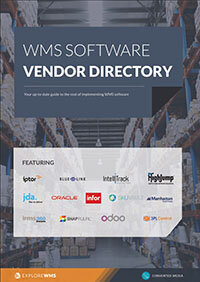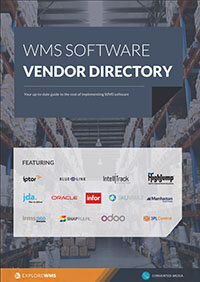Six advanced WMS features to consider during requirements analysis
The number of warehouse management systems seems to increase each day, establishing a set of baseline tools and support but also creating a large gulf between what’s standard and what is best-of-breed.
Advanced WMS features can often help you increase margins, cut costs, and enhance the safety of your warehouse. Here are six top features that you can consider and use to start brainstorming about what unique functionality would be good for your business.
1. Advanced verification support
Today, there are many WMS that offer some sort of truck loading and offloading verification. However, this tends to be limited by requiring some human interaction or specific devices that aren’t located near the truck.
We suggest you look for a platform that can perform lot number, serial number, and trailer label tracking with input and verification controls on mobile devices and scanners. Such support makes it easier to manage your inventory and speed up your overall warehouse processes.
2. Slotting and picking optimization
Surprisingly, this hasn’t become a mainstay in every WMS under the sun. It will, and the sooner the better, but for now you’ll want to verify that you get some support for picking and putting away locations.
Smart WMS will base its optimization on the physical speeds that goods and teams can move, plus prioritize goods that are used more often.
3. Hazmat support
Your WMS isn’t going to don a hazmat suit and put goods away for you, but it can help keep your team safe with broader reporting and tracking of hazardous materials. If you’re in this space or sometimes need such materials around, consider a WMS to has access to expanded CAS code options to support storage and picking of hazardous materials.
Find warehouse technology with the features you need using this free online WMS comparison tool
4. Incident tracking
If something does go wrong with those hazardous materials — or really anywhere else in your warehouse — tracking it is the first step in preventing it next time.
Look for a WMS that automates some incident tracking as well as allows manual inputs of incidents. It’ll boost your ability to resolve these issues, manage your workforce and assets, and ultimately run a better business that makes customers happy.
5. Simple personalization
Customization is a go-to requirement for just about everyone considering a WMS, so why did it make a list of advanced features? Because it can be a giant pain when it’s complicated.
If a vendor can prove to you — typically through customer references — that customization and advanced integration options are easy, give them a little boost to the “advanced” list. With APIs and other tools, you may be able to capture and use data your WMS generates in a variety of novel ways that can improve your business.
6. An off switch on secondary features
Many different WMS are built to address the needs of a wide range of customers and situations. This will often make them feel bloated with content and capabilities you don’t need, but you must take time to maintain and verify after updates and upgrades.
A modular structure could allow you to turn off or remove some of these features, making it easy to use only what you want and need. This design style also simplifies your requirements for scaling as business grows.
Spend time with that you need and what you know helps your business by selecting a WMS that uses a modular architecture, which is sometimes presented as in an app-store styled ability to select your tools.
Free white paper

WMS vendor directory
Save hours of WMS vendor research with this free guide

Featured white papers
-

WMS requirements template
Over 120 WMS feature ideas to help you build a requirements list and shortlist vendors
Download
Related articles
-

Your complete WMS features and requirements guide
How to gather requirements for a new WMS, and features to look for to meet them
-

Mission-critical features of food lot traceability software
What features of food traceability software will help you during a food recall
-

Here's your complete WMS modules and features checklist
All the features and modules you might need in your WMS - perfect for requirements gathering

